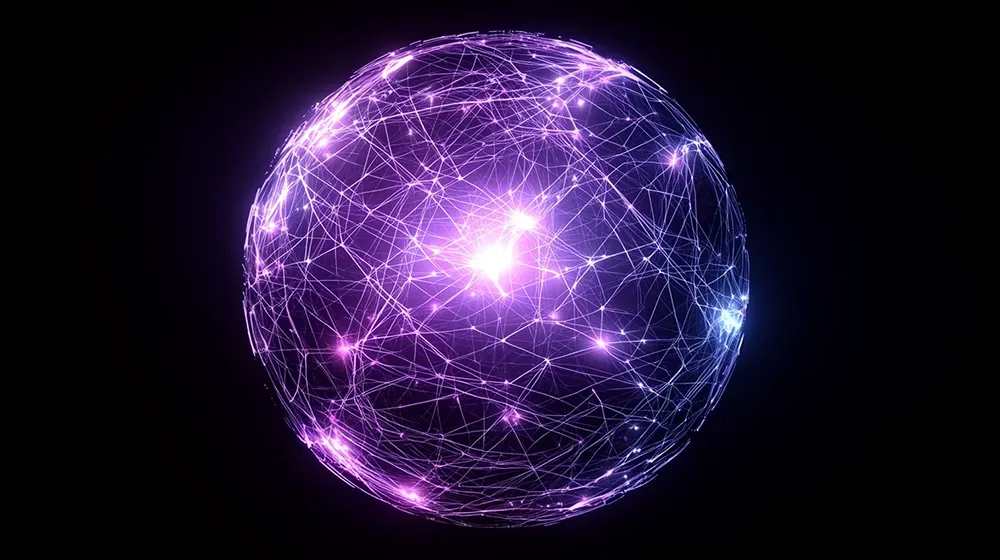AI Everywhere: Are We Ready for the Machines to Lead?

In 2025, artificial intelligence (AI) transcends its traditional confines, embedding itself into every aspect of life. From smart devices to enterprise systems, AI’s omnipresence redefines how individuals, businesses, and societies interact with technology.
This article focuses on one of the ten technology trends for 2025.
Read the full trends reportDespite the advancements in AI, the impact on jobs will still be limited in 2025 (I expect full disruption of the global workforce from 2027 onward, with a billion jobs lost before the end of this decade). This shift represents a societal transformation that challenges norms, creates opportunities, and demands reflection on the dual-edged nature of innovation.
LLMs That Approach Human Intelligence

The launch of OpenAI's o3 model at the end of 2024 is a sign of what is to come. When revealed, it raised eyebrows with its near-superhuman performance on the ARC-AGI test (a test designed to compare artificial intelligence with human intelligence), achieving 87.5% in high-compute mode, even surpassing typical human scores. This reasoning-focused model excelled at adapting to unfamiliar tasks, showcasing abilities far beyond its predecessors in coding, math, and graduate-level sciences. This breakthrough will result in models that adapt flexibly to new environments, mimicking human-like reasoning and generalization.
What if AI is capable of handling unprecedented natural disasters, devising solutions for unseen scientific challenges, or responding to geopolitical disruptions, all without the need for retraining? This shift would unlock a new level of robustness. It would move us closer toward what OpenAI describes as Level 4 AI, or Innovators. At this stage, AI doesn’t just assist in creation; it pioneers new ideas and breakthroughs.
Already, AI models are helping scientists and engineers design new materials, simulate biological processes for drug discovery, and optimize workflows that previously required years of experimentation. As AI advances toward Level 5, where it can perform the work of entire organizations and becomes Super Intelligent, it will redefine creativity and the very nature of invention itself.
The Rise of Agentic AI
Agentic AI—AI systems capable of autonomous action—will see accelerated adoption in 2025 as the technology improves. These systems will reshape organizational structures, enabling enterprises to automate decision-making and streamline complex tasks. It will allow organizations to operate more dynamically, but this shift could also dilute accountability if not managed carefully.
Companies will increasingly use fine-tuned large language models (LLMs) tailored to specific needs, such as McKinsey’s “Lilli” or JPMorgan’s LLM suite, a.k.a. the AI research analyst, or Uber’s use of open-source LLMs. Most organizations will, and should, build on open-source frameworks like Llama. With over 350 million downloads, Llama demonstrates how accessible AI has become, democratizing innovation while intensifying competition.
Edge AI and Invisible AI
In 2025, AI’s reach will extend further to the edge, with smartphones, IoT devices, and other connected technologies processing data locally. This shift toward Edge AI minimizes latency, reduces bandwidth reliance, enables real-time insights in everyday devices, and, most importantly, improves privacy and security (by limiting data exposure to external servers).
Complementing this trend is the rise of “invisible AI,” systems operating seamlessly in the background. Unlike traditional interfaces, these ambient systems anticipate needs, enabling frictionless interactions that blend into daily life—making AI feel less like a tool and more like a ubiquitous presence.
Defining the Human-Machine Relationship

AI's expanding presence in our lives forces us to confront profound questions about the relationship between humans and machines. Conversational interfaces like AI-powered personal assistants are becoming indistinguishable from human interaction. Digital twins, virtual replicas of physical assets, systems, and systems of systems, enable simulations that mirror reality so closely that they blur the line between the real and the digital. As machines begin to predict and execute decisions on our behalf, questions ofhuman agency arise: who controls these systems, and how do we retain accountability for the outcomes they generate?
This is where ethical dilemmas come to the forefront. AI systems are not neutral; they inherit the biases of their creators and the data they consume. In fact, AI systems are like mirrors. They reflect what they’ve been shown, biases and all. A cracked mirror distorts the truth, and so does flawed training data. Algorithmic decisions, if unchecked, can perpetuate inequalities and exacerbate divisions. Who determines what values are embedded into AI systems, and how do we ensure fairness, transparency, and accountability?
The concentration of AI capabilities among a few powerful entities, those with access to data, infrastructure, and resources, risks centralizing power in unprecedented ways. Without deliberate efforts to democratize access and ensure equitable distribution, AI’s benefits may be limited to the privileged, leaving others behind.
AI’s Duality: Promise and Peril
While AI empowers breakthroughs in all industries and global collaboration, it also exacerbates societal challenges. Its omnipresence will amplify inequalities, from job displacement to deepened filter bubbles. The optimistic dystopian reality is clear: AI liberates and marginalizes simultaneously, reflecting the societal choices that shape its applications.
Navigating this omnipresence requires responsibility and foresight, such as implementing ethical frameworks, fostering transparency, and prioritizing inclusivity in AI’s design and deployment. In 2025, leaders, governments, and individuals must ask themselves: How do we ensure AI reflects humanity’s highest aspirations rather than its deepest flaws?





